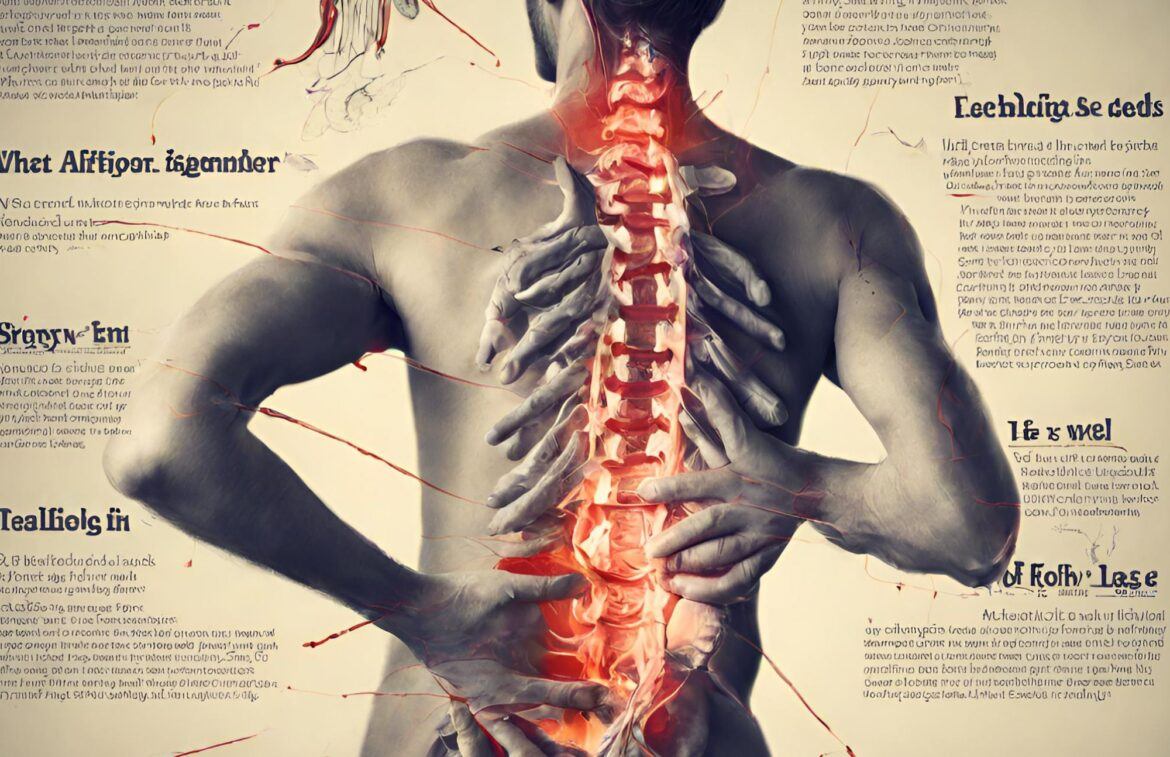Table of Contents
ToggleRecognizing Fibromyalgia Symptoms in Women
Did you know women are twice as likely to get fibromyalgia as men? This fact shows how much this chronic paindisorder affects women’s health. Women with fibromyalgia often face widespread muscle pain that makes daily life hard.
Chronic pain from fibromyalgia does more than just hurt. It impacts many areas of health, like physical movement and mood. The pain can change a lot, from mild to very severe.
It’s important to know the symptoms early to manage them better. Most women diagnosed are between 20 and 50 years old. Spotting the signs early can help you deal with fibromyalgia and find the right medical help.
Your experience with fibromyalgia is special. Even though the symptoms can be tough, knowing them can help you take charge of your health. You can work with doctors to find a treatment plan that fits you.
Understanding Fibromyalgia and Its Impact on Women’s Health
Fibromyalgia is a health issue that affects women more than men. Studies show women are four to seven times more likely to get it. Knowing how fibromyalgia affects women can help both patients and doctors manage it better.
Why Women Are More Susceptible to Fibromyalgia
Several factors make women more likely to get fibromyalgia. Genetics play a big role, with family history increasing the risk. Women between 35 to 45 years old are often diagnosed, suggesting hormones might trigger symptoms.
The Role of Hormones and Gender-Specific Factors
Hormonal changes can greatly affect fibromyalgia symptoms. Menstrual cycles, pregnancy, and menopause can make pain worse. Chronic stress and hormonal shifts seem to make women more prone to it.
Research suggests that how women process pain is different. Women often have more widespread pain and morning fatigue. They also report symptoms like irritable bowel syndrome more than men do.
Fibromyalgia Symptoms in Women: Key Signs to Watch For
It can be hard for many women to spot fibromyalgia symptoms. This condition is complex and not just about pain. Since up to 90% of those with fibromyalgia are women, knowing the signs is key.
Fibromyalgia is known for widespread pain that lasts for months. This pain is deep and intense, affecting many parts of your body at once. Women often say it feels like a dull ache that spreads through muscles and joints.
Fatigue is a big symptom of fibromyalgia. You might feel very tired even after sleeping a lot. This tiredness is not just feeling sleepy. It’s a deep lack of energy that makes daily tasks hard.
Many also struggle with cognitive issues, or “fibro fog.” This makes it hard to focus, remember things, and do complex tasks. Your mind might feel foggy, adding to the physical pain.
Knowing these symptoms is the first step to getting help. If you see these signs, see a doctor who knows about fibromyalgia. They can help you find the right treatment.
Widespread Musculoskeletal Pain: The Primary Symptom
Fibromyalgia is a complex condition with intense, ongoing muscle pain. It affects women deeply, impacting their daily lives. This pain is not just a simple ache but a widespread experience.
Understanding this pain is key. It spans both sides of the body, above and below the waist. The pain is dull and constant, changing in intensity during the day.
Common Pain Locations in Female Patients
Women with fibromyalgia often feel pain in the neck, shoulders, back, and hips. These areas are very sensitive. Even a little pressure can cause a lot of pain. About 2 percent of Americans have this, and it increases to 8 percent by age 70.
Characteristics of Fibromyalgia Pain
Fibromyalgia pain is different from regular muscle soreness. It feels deep and lasts a long time. Patients say it’s like a constant ache that spreads through muscles, making everyday tasks hard.
Tender Points and Pain Patterns
Doctors check specific tender points to diagnose fibromyalgia. The American College of Rheumatology looks at 18 points. If 11 of these are sensitive, it might be fibromyalgia. These points are key to understanding the condition’s complexity.
Chronic Fatigue and Sleep Disturbances
If you have fibromyalgia, you know the struggle of constant tiredness and sleep issues. Almost 96% of people with fibromyalgia face big sleep problems. It feels like your body is always tired, even after long sleep times.
Sleep apnea and other sleep disorders often add to the fibromyalgia challenge. Restless legs syndrome can mess up your sleep, leading to more pain and tiredness. The constant battle with sleep can feel overwhelming and impact your daily functioning.
Women, who make up 80-90% of fibromyalgia patients, are more likely to face these sleep challenges. The link between chronic fatigue and sleep issues is complex. Your pain sensitivity can grow when you don’t sleep well, making it hard to feel better.
New treatments like cognitive behavioral therapy for insomnia (CBT-I) and mindfulness meditation offer hope. These methods can improve sleep and slow down fibromyalgia’s neurological changes. Vitamin D supplements might also help by reducing pain and improving sleep.
It’s key to tackle your sleep problems to manage fibromyalgia. Talking to healthcare experts can help you find ways to sleep better and fight chronic fatigue.
Cognitive Difficulties and Mental Health Challenges
Fibromyalgia can really mess with your mind and mood. Many people face tough cognitive symptoms that make everyday tasks hard. This creates big mental health hurdles.
Understanding Fibro Fog
Fibro fog is a set of tough cognitive problems. It affects memory, focus, and how well you process information. More than half of fibromyalgia patients say they feel mentally foggy and forgetful.
These symptoms can make simple things seem like huge challenges. It’s a big problem for daily life.
Common fibro fog symptoms include:
- Forgetfulness
- Difficulty concentrating
- Slower mental processing
- Trouble finding the right words
Depression and Anxiety Symptoms
Fibromyalgia patients often deal with depression and anxiety. Emotional disruptions are common. Studies show they face more psychological distress than others with chronic pain.
The constant pain and brain fog can lead to frustration, feeling alone, and low self-esteem. These mental health issues can make symptoms worse and hurt your quality of life.
It’s key to understand these mental health aspects. This helps create better treatment plans that tackle both physical and mental sides of fibromyalgia.
Common Trigger Factors in Female Patients
Knowing what triggers fibromyalgia can help you manage your symptoms better. Physical trauma often starts or makes fibromyalgia symptoms worse. Car accidents, surgeries, and serious infections can trigger this condition.
Stress is a big trigger for many women with fibromyalgia. It can make your body more sensitive to pain and affect your health. Stress from traumatic events, work, or personal issues can make fibromyalgia symptoms worse.
Genetics also play a role in fibromyalgia triggers. If your family has a history of chronic pain, you might be more likely to get fibromyalgia. Viral infections and big hormonal changes can also make symptoms worse.
Finding out what triggers your symptoms is key. Keeping track of when your symptoms happen can help you avoid them. Working with healthcare professionals can give you tips on managing your fibromyalgia.
Hormonal Influences and Menstrual Cycle Impact
Learning about how hormones affect fibromyalgia can help you manage your symptoms better. Women face unique hormonal challenges that impact their fibromyalgia.
Research shows interesting links between hormonal changes and pain levels. About 47.5% of premenopausal patients see big changes in pain during their menstrual cycle.
Pregnancy and Postpartum Effects
Hormonal shifts during pregnancy can change fibromyalgia symptoms a lot. Many women notice changes in pain levels and how often they hurt. The hormonal changes in the body can affect how you feel pain from fibromyalgia.
Menopause and Symptom Changes
Menopause brings big hormonal changes that can make fibromyalgia symptoms worse. About 26.4% of postmenopausal women say their symptoms get more severe. Testosterone and progesterone help protect against pain, with studies showing they are inversely related to pain intensity.
Premenopausal women often see their symptoms change. 45% feel more pain during their period, and 57.5% feel more tired during their cycle.
Coexisting Conditions and Related Symptoms
Fibromyalgia often comes with other health issues. Studies show that up to 67.8% of people with fibromyalgia also have other conditions. These can make living with fibromyalgia even harder.
Irritable bowel syndrome is a common friend to fibromyalgia. People with both conditions often deal with stomach pain, bloating, and changes in bowel movements. This shows that both conditions might affect how the body processes information.
Migraines are also common in those with fibromyalgia. This adds to the pain management problems. Some think that both conditions might be linked through brain chemicals like serotonin and epinephrine.
Other conditions that often go hand in hand with fibromyalgia include:
- Chronic fatigue syndrome
- Temporomandibular joint disorders
- Interstitial cystitis
- Postural tachycardia syndrome
It’s important to understand these related health issues. This helps doctors create better treatment plans. They can work on addressing all symptoms at once.
Diagnostic Process for Women with Suspected Fibromyalgia
Diagnosing fibromyalgia can be tricky, especially for women with many symptoms. It needs a detailed approach, not just simple tests. Your doctor will look at your symptoms and health history to make a correct diagnosis.
Starting with a detailed medical history is key to spotting fibromyalgia. Your doctor will ask about your pain, sleep, and health. Women over 40 and those with family history are more likely to be diagnosed.
Medical History Assessment
Your doctor will dive into your medical history. They’ll ask about your pain, how long it lasts, and how it feels. They’ll also check for widespread pain, tiredness, brain fog, and mood swings.
Physical Examination Guidelines
The physical exam for fibromyalgia uses special methods. It’s not about finding 18 tender points anymore. Your doctor will look for pain in at least four areas and rule out other conditions.
Blood tests are also important. They check for things like complete blood count and other tests to rule out similar symptoms. Your doctor aims to understand your health fully.
Impact on Daily Life and Quality of Living
Fibromyalgia changes your daily life in big ways. It’s not just about feeling pain. It makes simple tasks hard and tiring.
Women with fibromyalgia face big challenges in their daily lives. Doing chores, working, and even talking to friends can be tough. You might feel different every day.
Feeling frustrated and alone is common. Chronic pain affects your mind as much as your body.
Work can be hard too. You might feel tired and struggle to focus. This can slow down your career or even change your job.
About 3.4% of women in the U.S. have fibromyalgia. It affects their social lives and independence. Knowing this helps find ways to cope and stay hopeful.
Having a supportive group and finding new ways to manage can help. Working with doctors is also key to improving your life with fibromyalgia.
Treatment Options and Management Strategies
Managing fibromyalgia needs a mix of treatments. Your plan might include several methods based on your symptoms. FDA-approved drugs, like those that boost serotonin and norepinephrine, can help lessen pain and enhance life quality.
Exercise is vital in treating fibromyalgia. Activities like swimming, walking, and yoga can reduce muscle pain and boost flexibility. Aim for a five-minute warm-up, 30 minutes of aerobic exercise, and a five-minute cool-down with stretching. These steps can help manage symptoms and build physical strength.
Other health approaches can also help. Cognitive behavioral therapy (CBT) helps with emotional stress. Massage therapy and acupuncture might also ease symptoms. Try vitamin D or magnesium supplements and use stress-reduction techniques like biofeedback to control body functions.
Finding a treatment plan that fits you is crucial. Work with healthcare experts to create a plan that tackles your specific symptoms. Being proactive in self-care and open to different treatments can greatly improve your life with fibromyalgia.
FAQ
What are the primary symptoms of fibromyalgia in women?
Women with fibromyalgia often feel widespread pain and chronic fatigue. They also have trouble sleeping and may experience “fibro fog,” which affects their thinking. This pain is constant and affects both sides of the body, lasting at least three months.
Why are women more likely to develop fibromyalgia?
Hormones, genetics, and how the body responds to stress make women more likely to get fibromyalgia. Changes in hormones during different life stages can also affect symptoms, making women more prone to the condition.
How is fibromyalgia diagnosed?
Doctors use a detailed approach to diagnose fibromyalgia. They look at your medical history, perform a physical exam, and might do blood tests. They check the type and location of pain and other symptoms.
What triggers fibromyalgia symptoms?
Many things can trigger fibromyalgia symptoms, like physical trauma or infections. Stress and hormonal changes can also play a role. Sometimes, symptoms start without a clear cause.
Can fibromyalgia be cured?
There’s no cure for fibromyalgia, but symptoms can be managed. Treatment includes medicines, exercise, stress-reduction, and changes in lifestyle.
What is “fibro fog”?
“Fibro fog” is when people with fibromyalgia have trouble focusing and thinking clearly. It can make everyday tasks hard and is often linked to memory problems.
Are there other conditions associated with fibromyalgia?
Yes, fibromyalgia often goes hand-in-hand with other conditions. These include irritable bowel syndrome, migraines, and chronic fatigue syndrome. These can make diagnosis and treatment more complex.
How do hormonal changes affect fibromyalgia symptoms?
Hormonal shifts can greatly affect fibromyalgia symptoms. Women may feel more pain and fatigue during certain times of their cycle or life stages. This can make managing symptoms harder.
Can lifestyle changes help manage fibromyalgia?
Yes, making lifestyle changes can help manage fibromyalgia. Regular exercise, stress management, and a consistent sleep schedule can reduce symptoms. Relaxation techniques can also improve quality of life.
What impact does fibromyalgia have on mental health?
Fibromyalgia can lead to depression and anxiety. The constant pain and fatigue can take a toll on mental health. It’s important to get comprehensive mental health support.




